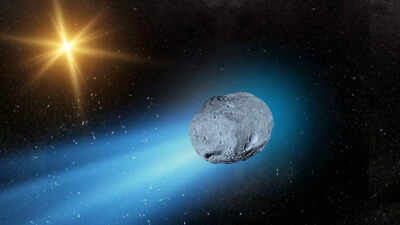Comet 3I/ATLAS, the third confirmed interstellar object to enter our solar system, is making its closest approach to Earth and the Sun between October 29–30, 2025. Scientists and space enthusiasts are tracking its hyperbolic trajectory live, as it passes just inside Mars’ orbit before exiting the solar system permanently.
Cosmic Visitor Alert: 3I/ATLAS Comet’s Earth Flyby Captivates Astronomers Worldwide
A rare celestial event is unfolding as Comet 3I/ATLAS, an interstellar object from beyond our solar system, makes its closest approach to Earth and the Sun. Discovered on July 1, 2025, by the ATLAS survey (Asteroid Terrestrial-impact Last Alert System), the comet has drawn intense interest from NASA, ESA, and the International Asteroid Warning Network (IAWN).
Key Highlights of the 3I/ATLAS Encounter:
Third Interstellar Object Ever Detected
Following 1I/‘Oumuamua and 2I/Borisov, 3I/ATLAS is only the third known interstellar object to visit our solar system.
Its hyperbolic orbit confirms it is not gravitationally bound to the Sun, meaning it will exit the solar system permanently after its flyby.
Closest Approach Timing
The comet reaches perihelion (closest point to the Sun) on October 29 at 11:47 UT, at a distance of 1.36 astronomical units (AU)—just beyond Earth’s orbit.
It will swing inside Mars’ orbit, coming within 210 million kilometers of the Sun.
Live Tracking and Visibility
Real-time tracking is available via platforms like ATLASComet.com and Track-3IATLAS.com, offering 2D/3D orbital simulations and brightness updates.
The comet is expected to be visible via large telescopes around November 11, in the eastern sky before dawn.
Scientific Significance
Studying 3I/ATLAS helps astronomers understand interstellar dynamics, comet composition, and gravitational interactions across galaxies.
Its behavior has sparked theories about its origin, possibly ejected from a distant star system millions of years ago.
Public Engagement
The event is being live-streamed globally, with space agencies urging enthusiasts to follow updates and sky maps.
Social media is abuzz with comparisons to past interstellar visitors and speculation about future discoveries.
This cosmic encounter is a once-in-a-generation opportunity to witness an object from another star system—reminding us of the vast, interconnected nature of the universe.
Sources: Mashable India, LiveMint
